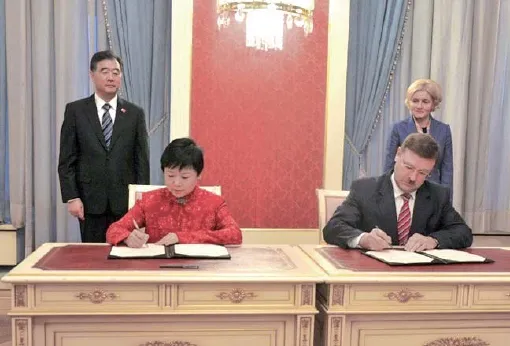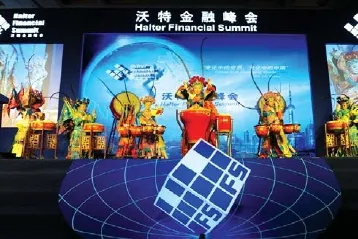友好城市:谱写民间外交事业新篇章
2016-11-24全国友协、友城联合会
友好城市:谱写民间外交事业新篇章
中国国际友好城市工作的发展进程
在我国,国际友好城市(以下简称“友城”)是指我国省、自治区、直辖市及其所辖城市与外国省(州、县、大区、道等)、城市之间建立的联谊与合作关系。
我国的友城发展大致可以分为以下3个阶段:
第一阶段“起步探索阶段”:1973年—1978年,我国共缔结了6对国际友好城市,仅限于和日本一个国家。
第二阶段“深入发展阶段”:1978年—1991年,我国进入改革开放新时期,对外交往日趋频繁,国际友城活动开始步入正常发展轨道。我国缔结国际友好城市发展到390对,扩展到许多国家,友好往来拓展到经济、文化、教育、人才培训等多领域。
第三阶段“蓬勃发展阶段”:1992年至今,由中国人民对外友好协会(以下简称“全国友协”)于1992年发起成立了中国国际友好城市联合会(以下简称“友城联合会”),标志着我国的国际友城活动进入了统一、协调、可持续发展的新阶段。随着我国改革开放的深化,各城市经济实力不断增强,对外交流活动日趋频繁,友城工作取得了巨大发展。
1999年,我会代表中国地方政府正式加入世界城市和地方政府联合组织(United Cities and Local Governments, UCLG)的前身地方政府国际联盟,并成为UCLG的创始成员。UCLG是世界上最大的地方政府联合组织,会员遍布120多个国家,代表全球一半以上人口。在我会的积极推动下,目前,中国大陆已有22个城市成为其会员,我国在该组织中的影响不断上升,成为我国城市外交的全新领域。

时任全国政协主席贾庆林会见出席2010中国国际友好城市大会的各国代表。
中国国际友好城市工作取得的成果
友城数量增长迅速。2000年以来,我国每年友城结对数量都保持较高增长速度。截至目前,我国已有31个省、自治区、直辖市(不包括台湾省及港、澳特别行政区)和464个城市与世界五大洲134个国家的499个省(州、县、大区、道等)和1546个城市建立了2340对友好省州和友好城市关系。
友城质量大幅提高。随着国家开放力度不断加大,中外友好城市之间在经济贸易、城市建设、技术研发、环境保护、教育文化、农业合作、医疗卫生等领域开展了诸多富有成效的交流与合作。为鼓励我国地方城市与各自友城间积极开展多领域、多层次的务实合作,我会设立了“国际友好城市交流合作奖”“国际友好城市特别贡献奖”和“对华友好城市交流合作奖”,在每两年举办的中国国际友好城市大会上,对在友好城市工作中作出突出贡献的中外城市进行表彰。
友城合作创新不断。经历了40多年的发展,中外友好城市充分发挥各自地缘、资源、文化等方面的优势,在合作方式上不断突破创新,探索形成了高层访问、民间互访、创办论坛、金融投资、对口支援等合作方式,发展空间不断拓宽,交流合作日益深化。
友城品牌持续加强。近年来,随着中外友城交流合作的不断深入,一些项目的品牌效应也逐步显现,在世界舞台上的知名度和影响力也越来越大。中国国际友好城市大会,从2008年开始每两年一届,迄今已在北京、上海、成都和广州成功举办了4次,得到了我国家领导人、世界各国地方政府及国际城市组织的充分认可,已发展成为中国研讨国际友好城市活动和开展中外地方交流的最具影响力的专门性国际论坛。
友城工作未来发展的方向

2013 年3 月,在汪洋副总理与俄罗斯戈罗杰茨副总理见证下,中国人民对外友好协会会长李小林与俄罗斯联邦独联体事务、海外侨民及国际人文合作署署长科萨乔夫签署合作协议。
2014年习近平主席在出席全国友协成立60周年纪念大会上指出,要推进民间外交、城市外交、公共外交,大力开展国际友好城市工作,促进中外地方政府交流,推动实现资源共享、优势互补、合作共赢。习主席的重要指示,为新时期如何做好友城工作指明了方向。
构建全球友城关系网,助力打造人类命运共同体。2015年9月,在联合国成立70周年系列峰会上,习近平主席全面阐述打造人类命运共同体的内涵,描绘了国际关系发展的美好前景,成为中国特色大国外交理论创新的重大成果。习近平主席强调,我们要在国际和区域层面建设全球伙伴关系,走出一条“对话而不对抗,结伴而不结盟”的国与国交往新路。全国友协所做的工作概括起来就是交朋友。友好城市是我们交朋友的重要渠道,通过缔结友城关系,可以增进与世界各国家人民之间的相互了解,深化友谊,增进合作。通过我国遍布世界五大洲134个国家的1500多个友好城市,构建起全球友城关系网,必将有助于我国建设全球伙伴关系,助力打造人类命运共同体。

2012 年10 月,中国人民对外友好协会、中国传媒大学、 哥伦比亚驻华使馆在北京共同主办首届“哥伦比亚电影节”。

2010 年4 月,中国人民对外友好协会与美国沃特财务集团在上海共同主办沃特金融峰会。
友城搭台、地方唱戏,不断提升地方对外开放水平。我国是一个发展中大国,发展仍然是我党执政兴国的第一要务。我国外交工作的一项重要使命就是为国内发展服务,落到实处,就是要为国内各省区市的对外开放和互利合作牵线搭桥。目前,我会拥有近500个会员城市,并且数量还在不断增长中。近年来,为促进中外地方交流,我会相继创办中国国际友好城市大会、中美省州长论坛、中日省长知事论坛、中印地方合作论坛、中法地方政府高层论坛、中波地方合作论坛、中坦城市对话会等一批高质量的论坛会议,中外地方政府交流机制内容不断充实,范围不断扩大。
优化友城布局,均衡地区发展。针对我国友城现阶段发展不均衡的情况,今后的友城工作要在国内和对外两方面优化布局,均衡发展。首先,要不断完善友城发展国内布局。在继续大力促进我国东部沿海省市国际友城的发展的同时,进一步加快我国中西部地区国际友城的发展,使我国友城发展形成以东部带动中西部地区国际友城发展的良性循环态势。其次,还要不断完善友城发展对外布局。要继续巩固加强与周边近邻国家的友城关系,发展与西方先进国家的友城关系,重点推动与“一带一路”沿线及拉美、非洲、南亚、东南欧国家的友城关系,形成全方位、多领域的对外交流合作态势。
促进友城交流全民参与,搭建官方民间互动平台。今年7月,习近平主席在致2016年二十国集团民间社会会议的贺信中强调,民间社会组织是各国民众参与公共事务、推动经济社会发展的重要力量。友城交流作为民间外交的重要组成部分,上接各级政府,下至草根民众,具有官民并举的独特性。今后在开展友好城市工作中,既要重视开展政府、议会间的交流,也要重视开展各行业、各民间社会团体之间的交流,通过调动普通民众参与友城交流的积极性,搭建官方民间互动平台,听取社会声音、凝聚社会共识,进一步推动政府和民间形成良性互动,通力合作,携手并进,共同推进经济社会持续健康发展。
经过40多年的快速发展,不论是在数量、质量还是管理水平上,我国的国际友好城市工作都进入了一个稳定和有序发展的新时期。尽管我国和一些国家的双边关系偶遇波折,但双方的友好城市交往一直继续,这也表明我国友好城市的发展已经进入了较为成熟的时期。今后,我国的国际友城交往将不断向多层次和宽领域发展,友好城市在促进地方经济和社会的发展中将扮演越来越重要的角色。
(全国友协、友城联合会供稿、供图)
Development of the Friendship Cities
In China, the international friendship cities (hereafter shortened as “friendship cities”) refer to the friendship and cooperation relationship established between provinces, autonomous regions, municipalities and other cities of China and provinces (including states, counties, and districts) and cities of foreign countries.
The development of friendship cities establishment in China has gone through three phases listed as follows:
Phase I – “the early exploration phase” from 1973 to 1978 during which we established 6 pairs of friendship cities with Japan only.
Phase II – “the gradual expansion phase” from 1978 to 1991 during which China ushered in a new era of reform and openingup and exchanges with foreign countries went more and more frequently, so the establishment of friendship cities continued in an orderly way. The friendship cities increased to 390 pairs with many countries other than Japan and the cooperation fi elds also were expanded to economy, culture, education and human resources training and so on.
Phase III – “the rapid expansion phase” from 1992 till now during which The Chinese People’s Association for Friendship with Foreign Countries (hereafter shortened as the CPAFFC) proposed and founded the China International Friendship Cities Association (hereafter shortened as the CIFCA) in 1992, which indicates that this activity has come to a brand new stage characterized by high degree of consistency, balance and sustainable development. Up till now, great progress has been achieved in the establishment of friendship cities together with China’s increasingly deepened reform and opening-up, enhanced economic strength and frequent foreign exchanges.
In 1999, the CIFCA entered, on behalf of Chinese government, the United Cities and Local Governments (UCLG), formerly known as the International Union of Local Authorities (IULA) as one of its original member. As the largest union for local governments, the UCLG more than 120 member countries all over the world, accounting for half and more populations of the world. With the active promotion of the CIFCA, there are currently 22 cities in China included into UCLG as members, which grants more says to China and proves to be a brand new fi eld we could tap into in terms of cities exchanges.
Achievements of the Establishment of Friendship Cities
Rapidly increased friendship cities number. Since the year of 2000, the number of friendship cities established has been growing rapidly. Up till now, 2,340 pairs of friendship provinces/ states and cities have been established between 31 provinces, autonomous regions, municipalities (excluding Taiwan, Hong Kong and Macao Special Administrative Regions) and 464 cities in China and 499 provinces (including states, counties, and districts) and 1,546 cities of 134 foreign countries from fi ve continents.
Highly improved quality of friendship cities. On the one side, China continues in the way of further deepening and widening the fields its reform and opening-up covers, which allows the friendship cities to expand the exchanges and cooperation to more areas ,including economic trading, cities construction, technology research and development, environment protection, education, agricultural cooperation and medical health and so on. On the other side, in order to encourage the practical cooperation of multiple fi elds in various levels between friendship cities, the CIFCA puts forward several types of prizes so that friendship cities with outstanding contributions could be honored the way they deserve on “China International Friendship Cities Conference” held biennially, including the “International Friendship Cities Exchange and Cooperation Award”,“International Friendship Cities Outstanding Contribution Award”and “China’s Friendship Cities Exchange and Cooperation Award”.
Increasingly diversifi ed cooperation modes between friendship cities. After more than 40 years of development, the friendship cities, on the basis of their own geographic and cultural advantages, have been cooperating in more diversifi ed modes, including high-level of government visits, non-government visits, forums, financial investments and partner assistance, which indicates a further expanded and deepened exchange and cooperation between them.
Increasingly improved brand effect of friendship cities. In recent years, some projects, owing to the deepened cooperation between friendship cities, reveal a more and more obvious brand effect and grow increasingly infl uential on the world stage. For example, the biennial China International Friendship Cities Conference, which has been successfully held four times in Beijing, Shanghai, Chengdu and Guangzhou respectively since 2008, has been fully acknowledged by leaders of China, other local governments and international cities organizations all over the world and developed to be one of the most infl uential international forums for discussions about activities of friendship cities and for exchanges between China and foreign countries.
Future Directions of Friendship Cities Development In 2014, President Xi Jinping pointed out on the 60th Anniversary Conference of CPAFFC that more efforts should be made to promote people-to people diplomacy, city-to-city diplomacy, public diplomacy, friendship cities development and exchanges of local government between China and other countries so as to achieve resources sharing, advantages complementing and winwin situation, which indicates our ways forward in the future for friendship cities work.
To build a globally connected friendship cities network and a community of common destiny for all mankind. On a series of summits celebrating the 70th anniversary of the founding of the United Nations in September, 2015, President Xi Jinping elaborated on how to establish a community of common destiny for all mankind and drew a promising picture for the development of international relationships, which marked the great achievement brought forward by the great-power diplomatic theory with Chinese characteristics. President Xi Jinping also emphasized that we should establish a globally connected partnership both in international and regional levels so as to initiate a brand new mode for country-to-country relationships, that is, “dialogues over confrontations and being partnered instead of being aligned”. The main job for the CPAFFC is to make friends while the friendship cities prove to be an important channel for it in terms of enhancing mutual understanding, friendship and cooperation between Chinese people and people of other countries. Given that we have established over 1,500 pairs of friendship cities with 134 foreign countries all over the world, we are already half way to build a globally connected friendship cities network and a community of common destiny for all mankind.
To upgrade the reform and opening-up level of local cities via the platform of friendship cities. As a major developing country, development remains the fi rst priority for the Communist Party to govern and rejuvenate China in a better way. One important mission of our diplomatic work is to serve the domestic development, which, specifi cally speaking, refers to acting as a go-between for provinces, autonomous regions, municipalities and cities of China to open up to and have reciprocal cooperation with other countries. At present, the number of member cities owned by the CPAFFC has increased to 500 and is still on the rise. The CPAFFC also has organized a series of high-quality forums and conferences to promote a more effi cient exchange for cities between China and foreign countries, such as the China International Friendship Cities Conference, China-U. S. Governors Forum, China-Japan Governors Forum, China-India Local Governments Cooperation Forum, China-France Local Governments Forum, China-Poland Local Governments Cooperation Forum and China-Tanzania Cities Dialogue Session and so on, which shows that the exchange mechanism and extent between China and foreign countries has been gradually enriched and widened.
To optimize the friendship cities’ layout and balance regional development. More priorities shall be given to optimize the layout of friendship cities home and abroad considering the fact that they are already distributed disproportionately. Firstly, the layout should be balanced between the east and the west within China, namely, while we continue to promote the further development of coastal provinces and cities of the east, efforts should be made to establish more friendship cities in west region so that a benign cycle could be formed where the east development could serve as successful experiences for the west and infl uence the latter in a positive way. Secondly, the layout concerning foreign countries should also be balanced. On the one side, we should continue to cement our friendships with developed countries of the west; on the other side, priorities should be given to establish more friendship cities with peripheral countries and countries of other continents, especially with countries along the Belt and Road line and of Latin-America, Africa, South Asia and Southeast Europe, so that the future diplomatic exchanges could be carried out in an all-round and multiple-fi eld way.
To encourage a whole participation of people and set up an interaction platform between government and citizens. In July of this year, President Xi Jinping stressed in the “Congratulations Letter on the 2016 G20 Non-government Societies Conference”that non-government organizations function as an important platform through which more people could take part in public affairs and the economic development could be strengthened. Being a crucial part of non-government diplomacy, the friendship cities work as a bridge connecting governments and common people. So, more importance should be attached to both exchanges between governments and congresses and exchanges between various industries and non-government societies to encourage wider participation among common people, set up interaction platform for government and people, listen to people’s voice and aggregate social consensus, which would create a positive atmosphere for benign interactions and close cooperation between the government and people and therefore embrace a sustainable development of economic society.
In conclusion, the development of friendship cities, after more than 40 years of rapid development, has reached a new phase which is stable and orderly in terms of quantity, quality and management level. Despite the fact that the bilateral relationships between China and some countries might hit the rocks occasionally, the communication between friendship cities of these countries, however, keeps moving forward positively, which also implies that the friendship cities function in a relatively sound and mature system of their own. In the future, exchanges between friendship cities will expand to deeper layers and broader fi elds and play an increasingly important role in boosting the development of local economy and society.
(Provided by China International Friendship Cities Association)
Friendship Cities: A New Chapter for People-to-People Diplomacy
